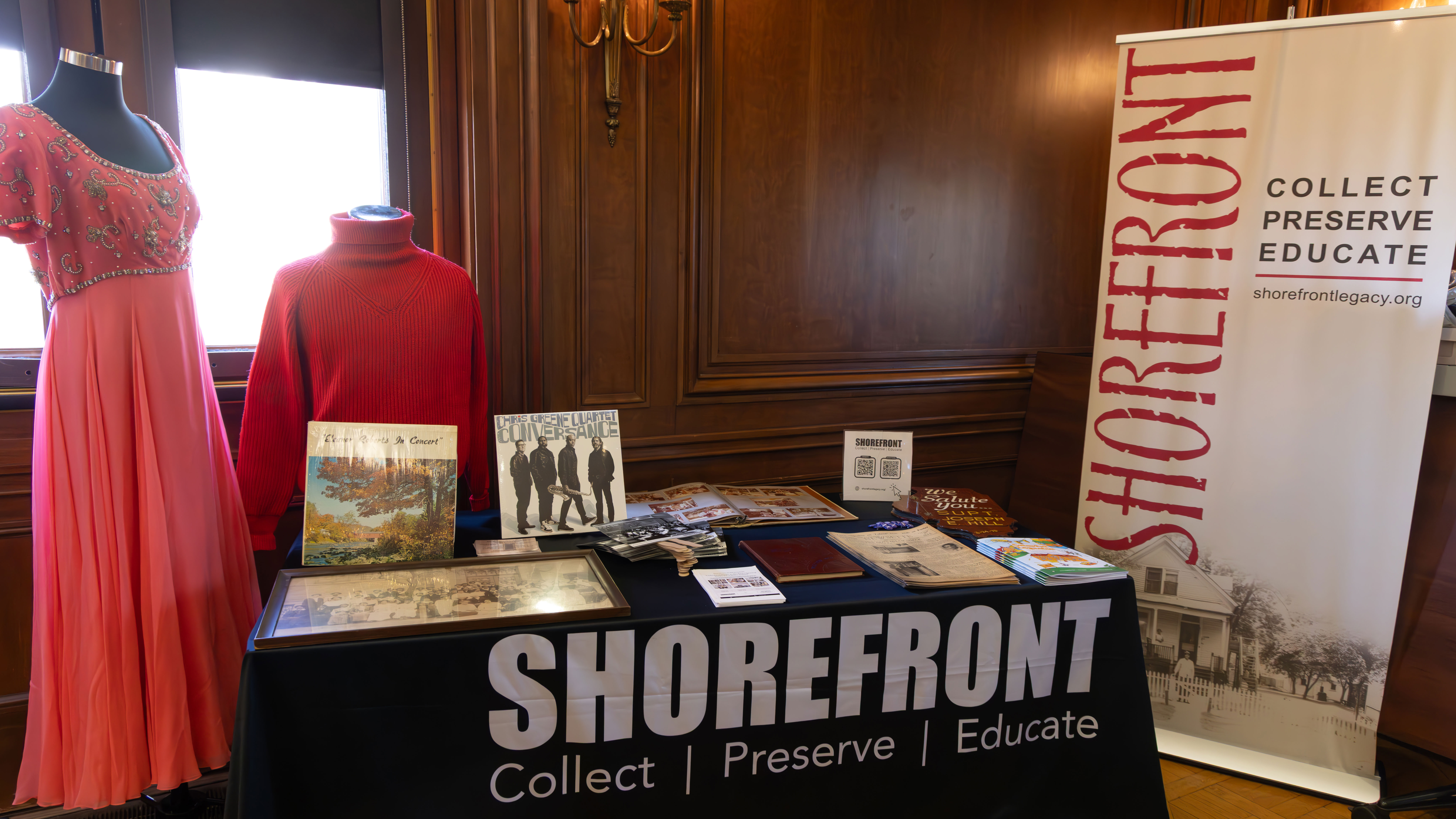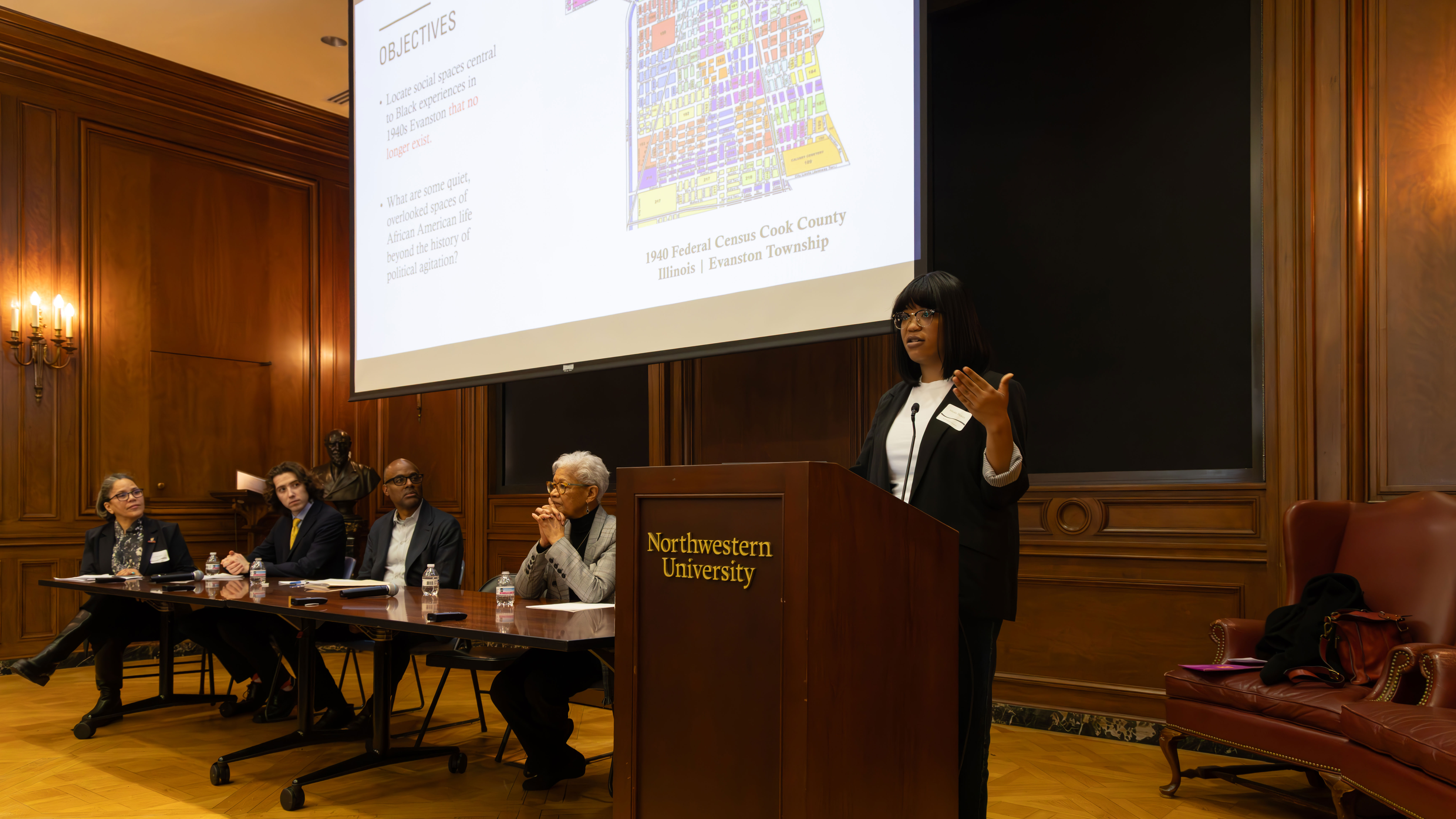Symposium Highlights: Preserving Evanston’s Black History
Symposium Highlights: Preserving Evanston’s Black History
By Karrah Toatley, Medill junior
Photography credit: Teresa Crawford

After months of archival research uncovering hidden chapters of Evanston’s Black history, researchers gathered in Harris Hall with community members on Saturday, April 26, to unveil their ongoing work. The daylong symposium showcased the fruits of a grant-funded initiative led by History Professor Kate Masur together with Laurice Bell, executive director of the Shorefront Legacy Center, and Ruth Curry, program administrator at the NU’s Center for Civic Engagement. Their project, titled Activating Local Black History, was supported by an ANCHOR grant from Northwestern's Office of Neighborhood and Community Relations (NCR), with additional funding from Nicholas D. Chabraja Center for Historical Studies.
Over the course of the day, more than ninety attendees filled their minds – and at times, their stomachs – with a steady flow of research presentations and discussions, as well as a film screening. The projects explored topics including the built environment, place-based memories, activism, intergenerational storytelling and documentation of the Black experience. Despite differences in form and focus, each project breathed new life into underrepresented stories that not only honor the past but provide a new lens for understanding the present.

Dave Davis, senior executive director of NCR captured this spirit in his opening remarks. In his role, Davis works to bridge Northwestern with the Evanston community by extending university resources, but this project, he emphasized, felt fundamentally different. “We talk a lot about mutually beneficial partnerships,” Davis said.
“But this [initiative] was co-created by [the] university and [the] community, and it's committed to making sure that our history is preserved.”
True to Davis’s point, Activating Local Black History was a fundamentally collaborative project. Research was conducted by Shorefront archivists, an Evanston Township High School (ETHS) student and two teachers, Northwestern students, staff, and faculty, and members of the broader Evanston community. To support the researchers’ work, community members generously shared their stories and entrusted researchers with access to ancestral collections and family legacies.
Turnout on April 26 reflected the community’s investment in the initiative. Harris Hall was filled with attendees of all ages and backgrounds. Among them was Audrey Moy, communications liaison of Wayfarer Foundation, who made sure to attend despite only having slept three hours. “I have an interest in this because I grew up in Evanston,” Moy said. “Thinking that I understood the racial thing here and I did not. So yes I’m learning more and more.”

Northwestern first-year Ansley Simpson was drawn to the event because she wanted to learn about the community she now resides in. “I don’t really have any family in the Chicago area, so I’m not familiar with the history,” Simpson said. “My family is from the South, so it was interesting and insightful hearing more Northern stories about segregation experiences.”

The event highlighted how crucial it is to engage with local histories that often go unspoken. “It is a reminder that local Black history is just as important as the stories that are nationalized,” Simpson said. “Black Americans have overcome hardships all over the country, even though their stories may not be as widely heard.”
Her reflections were echoed during a Q&A portion of the symposium, when one audience member described the event as nothing short of “history being made.” It was a fitting description for a day that served not as a conclusion but as a public checkpoint in the ongoing process of preserving Evanston’s Black history. The symposium made clear that this effort belongs to everyone and has the potential to reshape the narratives we inherit.
